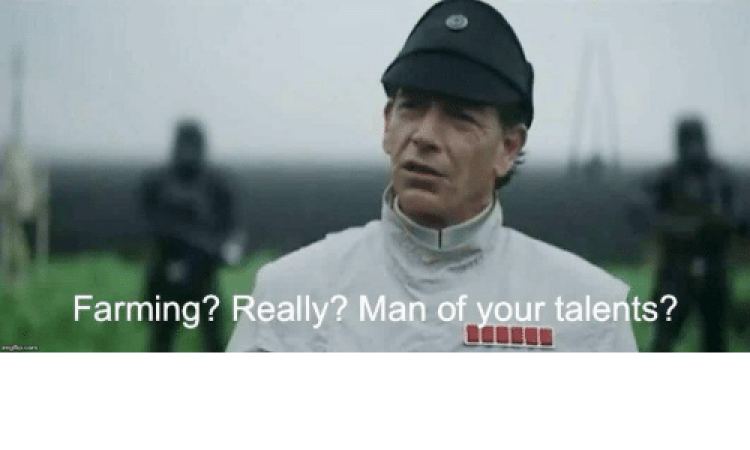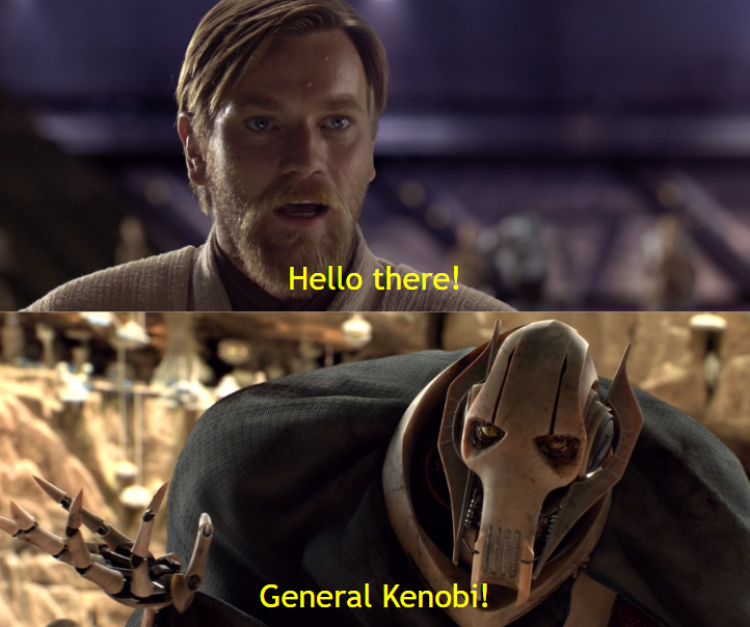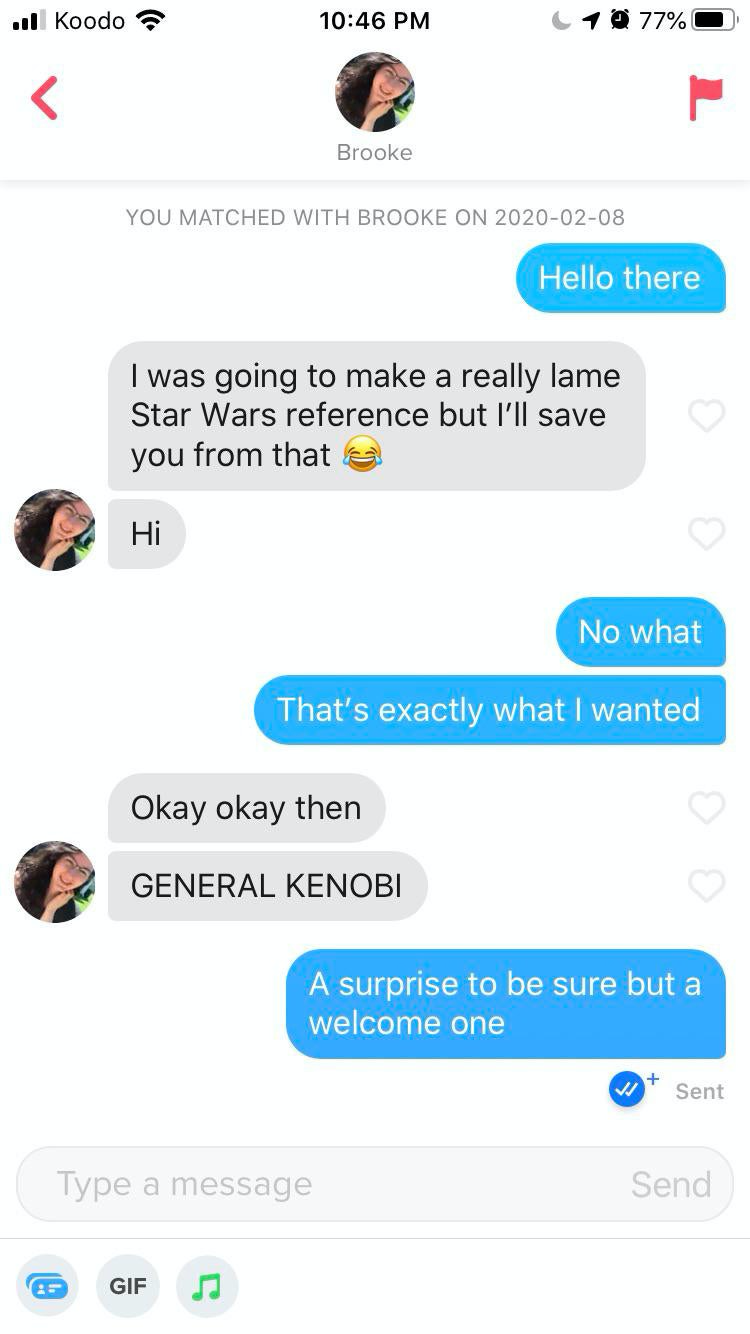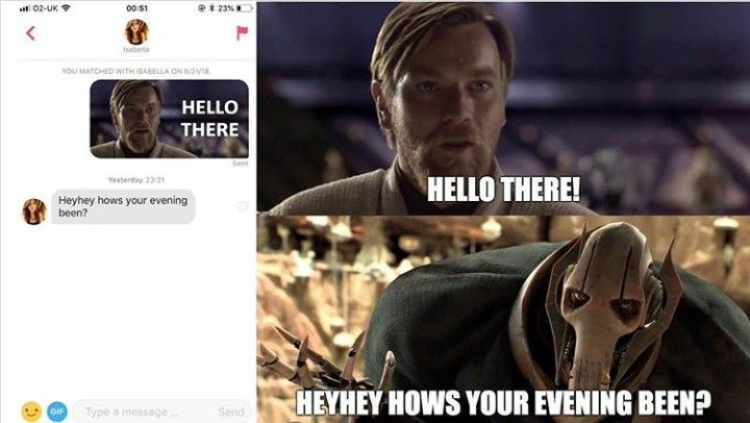How to Do Things with Memes
The memes shared by Star Wars prequel fans in a very nerdy corner of the internet may help us understand how memes create community.
By: Carolyn Olmsted
Course: Language and Digital Media (Ling 3800)
Advisor: Prof Kira Hall
LURA 2020
In 1962, J.L. Austin changed the face of pragmatic linguistic analysis with his famous work How to Do Things with Words. Claiming that language does not simply describe the world but also changes it, Austin established the theory of speech acts. My project, developed for Prof. Hall’s course “Language and Digital Media,” builds on Austin’s research by investigating internet memes as a kind of speech act, or “how to do things with memes.” I explain how memes work through three concepts taken from the field of computer-mediated discourse: redistribution, recontextualization, and remediation.
Redistribution involves sending a message or form of media unaltered to someone else. This process can be seen in many processes predating memes, such as chain emails. An example of a chain email can be seen below:

(Retrieved from https://www.buzzfeed.com/hgrant/the-18-best-chain-e-mails-you-got-in-2004)
Recontextualization is seen in memes where the original quote or reference is unchanged. However, when the quote is shared in different contexts, the meaning can be changed. One example of a frequently recontextualized Star Wars quote is seen below:

Remediation can involve mixing references to multiple works of media, mixing references to media and everyday non-digital life, or complex “remixes” that change two media pieces into a novel form. This last form is characterized by specialized knowledge and use of meme templates. Meme templates are images with blank slots for users to fill in with their own text or images; they are extremely recontextualizable and widely circulated. If a viewer does not understand the template or the reference in the meme, they will not understand the joke. Below is a meme template with a remediation based on the Star Wars prequels:

(Retrieved from https://twitter.com/missingegirl/status/1123647491025428480)

(Retrieved from https://mobile.twitter.com/jbcasacop/status/1194400246865883137)
In order to see these concepts in action, I chose to look closely at an online-based community: Star Wars prequel fans, mainly in the r/prequelmemes community on the social media website Reddit. These fans focus mainly on Episodes I, II, and III of the Star Wars franchise. The majority of prequel memes are based on quotes from the films. The meme I chose to focus on is one I call the “General Kenobi” meme.
The “General Kenobi” meme is taken from a scene from Star Wars: Episode III, seen below:

In this scene, Obi-Wan Kenobi, the bearded man, greets his adversary, General Grievous, the robot-looking alien. He says “Hello there!” and Grievous responds “General Kenobi!”. The scene is one of the most popular memes in the community; whenever someone says “Hello there!”, there will be many responses of “General Kenobi!”
I chose to analyze this meme as an adjacency pair, a concept taken from conversation analysis. This is a type of turn-taking in which two speakers produce two utterances in succession. The first utterance, or first-pair part, elicits an utterance in response, or a second-pair part. Second-pair parts can be either preferred or dispreferred, meaning that the second speaker will either respond with the desired type of answer, which is preferred, or the unwanted type, which is dispreferred. Although the “General Kenobi” meme is a non-normative adjacency pair, it works in the same way.
When one prequel fan greets another with “Hello there!”, the preferred response is “General Kenobi!” If the preferred response is given, the second fan is considered a member of the community, but if the dispreferred response (i.e. any other response) is given, they are considered to be part of the outgroup. These processes are known as adequation and distinction (Bucholtz & Hall 2004, 2005). Adequation involves building community through sameness, and distinction involves building community through difference.
Adequation and distinction can be seen in some related examples I collected of conversations from the dating app Tinder.

(Retrieved from: https://www.reddit.com/r/PrequelMemes/comments/f22l2b/wasnt_quite_what_was_planned_but_we_got_there_in/)
In this example, Brooke is counted as a member of the community because she gives the preferred response, after some initial uncertainty. This is an example of adequation.

(Retrieved from: https://www.reddit.com/r/PrequelMemes/comments/8u50ud/she_cant_do_that_shoot_heror_something/)
In this example, Isabella gives a dispreferred response. The messenger then created the meme seen above to the r/prequelmemes community as a joke. The community is therefore defined as being different from Isabella because they understand the reference. This is an example of distinction.
My paper includes many other memes and analyses not seen here, using concepts such as formulaic jokes (Hall 2019), stancetaking (Bucholtz, Skapoulli, Barnwell, & Lee 2011), and dual indexicality (Hill 1995). Through these analyses, it can clearly be seen that meme creation and circulation creates and builds online communities. Although memes have not yet been fully studied in terms of these contributions to community-building, the examples analyzed in my paper provide a rich resource for understanding how memetic redistribution, recontextualization, and remediation may serve to create community.


